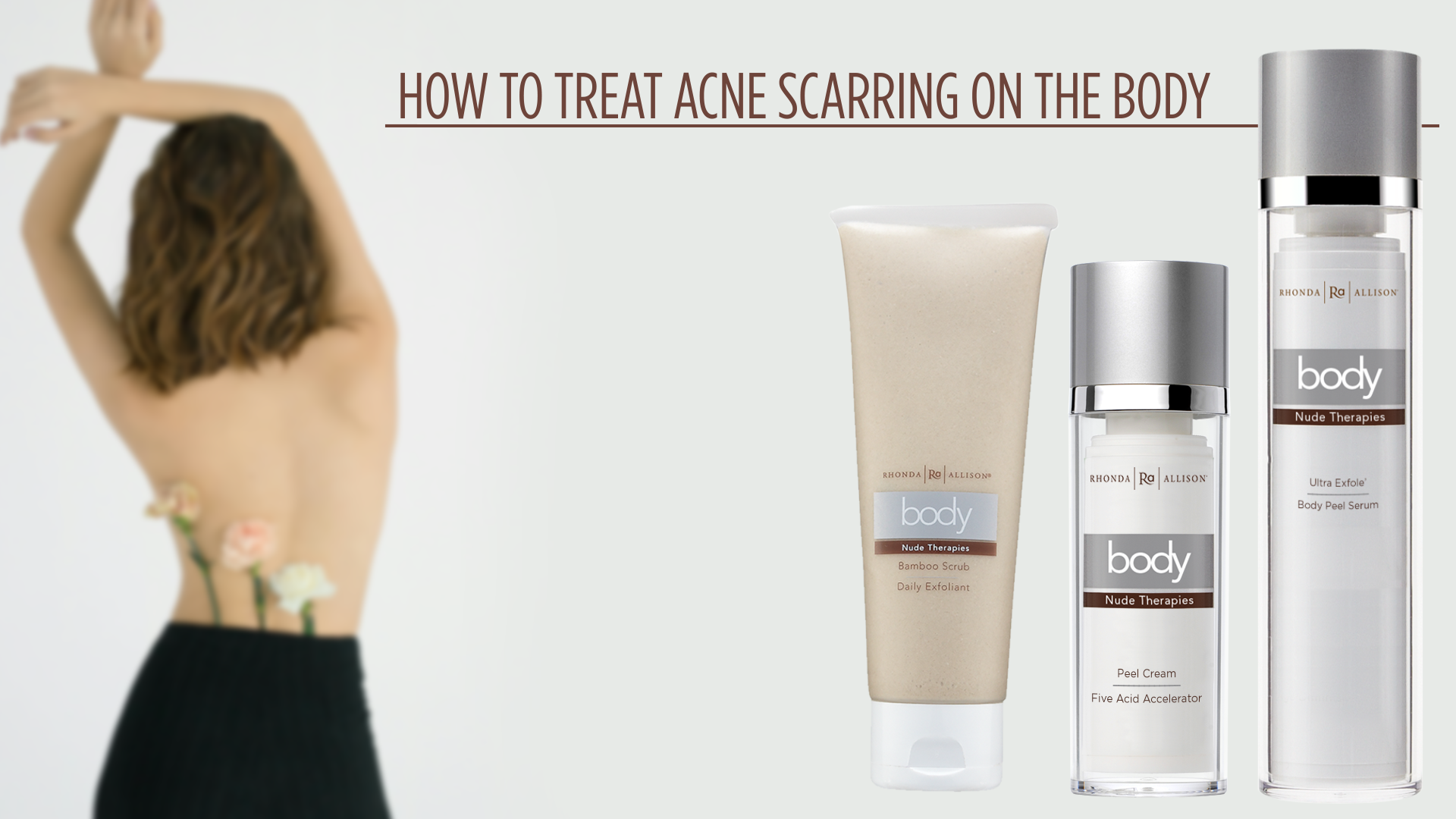
Continuing with this series on treating the issues that challenge the body, this post will cover acne scarring. Though it’s a very common issue, acne scarring presents a significant challenge for a number of skin care professionals for the simple fact that it appears in a variety of ways. It can take on different forms in different skins and appear in varying degrees of severity.
Typically, you may see these in the form of depressed scars, or pits, or they may take the shape of raised scars known as hypertrophic. In some cases, there may be some discoloration as well. The key is to understand and properly identify the type of scarring you are working with so that you may create a customized treatment.
Scars form when an acne breakout penetrates the skin deeply, damaging the tissue beneath. Once the acne breakout clears, the body works to repair the damage, which stimulates collagen production. If too little or too much is produced, a scar will form. If not enough collagen is present, a depressed scar may form. Too much, and a raised scar may result. Knowing the type of scar will aid you in determining the best course of treatment.
When treating acne scarring, the goal is remove surface cells to allow other nourishing and corrective ingredients and oxygen to penetrate the skin. Keep in mind, scar tissue is difficult to address, particularly on the body. While it is possible to reduce the appearance of a scar, it is a permanent mark, and the damage will remain at the dermal layer.
Improving the appearance of acne scarring
With an understanding that damage will remain at the dermal layer, there is plenty we can do in the treatment room and with home care to help soften the tissue and reduce the rigidness and improve the appearance at the surface level. For this, corrective topicals are essential:
- AHAs – these will seep into the cells to stimulate cell regeneration by loosening the ceramides holding the cells together.
- Salicylic acid – exfoliates and stimulates cell turnover. It is also particularly effective in getting the outer layer of the skin to peel, which makes it useful in treating psoriasis, calluses and keratosis pilaris.
- Retinol – encourages tissue regenerating and strengthening. Retinol is extremely beneficial in treating scar tissue as it works to “re-educate” damaged cells, speed cellular production, and improve circulation.
Depending where the scarring is on the body, modalities that typically work to smooth acne-scarred skin include body peels, microneedling, and microdermabrasion.
- Peels – higher-strength acid formulas such as a TCA/AHA combination, flower acids, and vitamin A with peptides will create necessary exfoliation action while delivering repair and strengthening qualities. Look to the Vitamin A+ Peptide Peel, 15% TCA/AHA, and Flower Acid Peel.
- Microdermabrasion – this is very effective in reducing scars as it removes cells of the stratum corneum allowing other corrective and nourishing ingredients to better penetrate the skin. A mid-depth or deep treatment will work best. Following microdermabrasion, a skin-strengthening peel will be essential as the skin needs to be rebuilt from the inside out.
- Microneedling – deeper microneedling procedures work well to remodel scar tissue, but caution must be exercised here. If pushed too deep, subcutaneous scarring may occur.
With any corrective treatment, caution must be exercised. Take into account the full picture of the client’s skin issues, ancestry, lifestyle, and any current health issues. Also be sure to read the client’s skin during the treatment.
Remember a scar is a permanent mark damaged at the cellular level so home maintenance is essential. For home care, growth factors, peptides, hyaluronic acid, essential fatty acids will all support restoration, repair and strengthening in the skin. A physical sun protectant is a must! Regenerating corrective topicals that contain vitamin A, alpha and beta hydroxy acids may also be used to boost exfoliation, softening texture. The Bamboo Scrub and Peel Cream are excellent maintenance topicals on body acne scars.
Question: What are some of your biggest challenges when it comes to treating acne scarring on the body?
